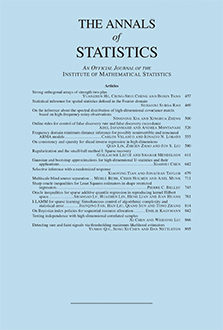Abstract
In high-dimensional regression, we attempt to estimate a parameter vector
We show that when the statistican has very simple structural information about the distribution of the entries of
Funding Statement
The first author was supported in part by NSF Grants DGE – 1656518, CCF – 1714305, IIS – 1741162, and ONR N00014-18-1-2729.
Citation
Michael Celentano. Andrea Montanari. "Fundamental barriers to high-dimensional regression with convex penalties." Ann. Statist. 50 (1) 170 - 196, February 2022. https://doi.org/10.1214/21-AOS2100
Information





